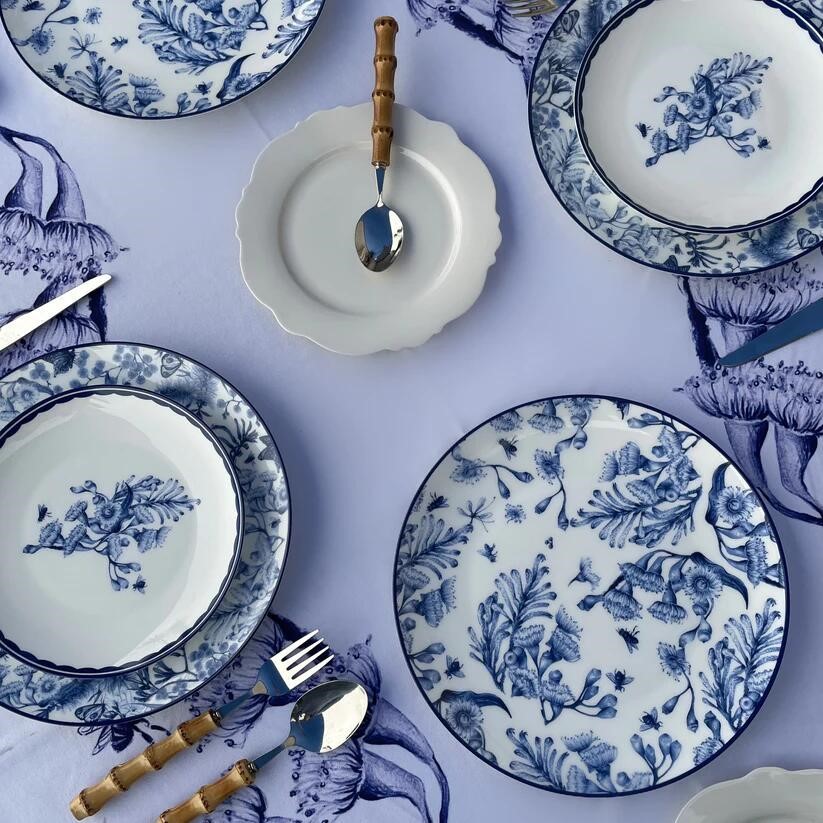In the world of ceramics, few materials hold the same level of prestige and admiration as porcelain. Renowned for its exquisite beauty, delicate nature, and timeless appeal, porcelain has captivated cultures and collectors for centuries. Its journey from ancient China to global prominence reflects not only technical mastery but also a deep appreciation for artistry and craftsmanship. In this article, we explore the reasons why porcelain has remained the most prized ceramic throughout history.

A Rich History: Porcelain's origins can be traced back to ancient China, where it was first developed during the Eastern Han Dynasty (25-220 AD). Known as "China" in the West due to its country of origin, porcelain quickly gained fame for its unparalleled translucency, strength, and ability to hold intricate designs. The secrets of porcelain production were closely guarded by Chinese artisans for centuries, sparking a fervent desire for this "white gold" among European nobility and elites.
Exceptional Qualities: Several key qualities contribute to porcelain's enduring allure:
Translucency and Brilliance: Unlike other ceramics, porcelain possesses a unique translucency that allows light to pass through its surface, giving it a luminous quality. This translucency, combined with its smooth texture and brilliant white color, lends an ethereal beauty to porcelain objects.
Durability and Strength: Despite its delicate appearance, porcelain is surprisingly durable and resistant to heat, making it ideal for tableware and decorative items. Its strength allows for the creation of thin, delicate forms without sacrificing structural integrity.
Versatility in Design: Porcelain's versatility in design is virtually limitless. From intricately painted vases and figurines to minimalist modern tableware, porcelain adapts to a wide range of artistic styles and techniques. Its smooth surface provides a perfect canvas for intricate hand-painted patterns, elaborate relief work, and sculptural details.
Cultural Significance: Porcelain has played a significant role in cultural exchange and diplomacy throughout history. The trade of porcelain along the ancient Silk Road facilitated the exchange of ideas, technologies, and artistic influences between East and West. Porcelain objects became prized possessions, symbols of wealth, status, and refined taste.
Innovation and Adaptation: Over the centuries, porcelain production techniques have evolved and diversified, leading to the emergence of various types of porcelain worldwide. From the delicate Jingdezhen porcelain of China to the translucent Meissen porcelain of Germany and the elegant Limoges porcelain of France, each region has developed its own distinct style and tradition.
Modern advancements in technology have further expanded the possibilities of porcelain production, allowing for greater precision, consistency, and experimentation with new materials and forms. Contemporary artists and designers continue to push the boundaries of traditional porcelain craftsmanship, creating innovative works that bridge the gap between art, design, and technology.
Porcelain's enduring appeal lies not only in its exceptional beauty and craftsmanship but also in its ability to transcend time, culture, and geography. From imperial courts to contemporary art galleries, porcelain continues to captivate and inspire audiences worldwide. Its legacy as the most prized ceramic for centuries serves as a testament to the enduring power of artistic expression, cultural exchange, and human creativity. As we admire the delicate lines and luminous surfaces of porcelain objects, we are reminded of the timeless beauty that continues to define this cherished ceramic treasure.
Post time: Jan-29-2024




